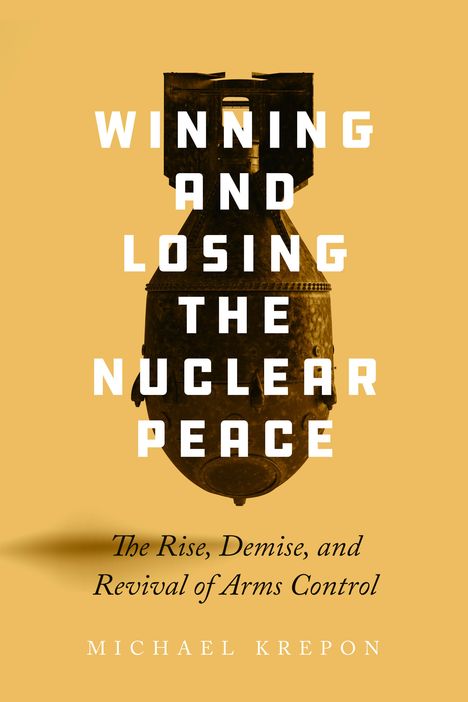Michael Krepon: Winning and Losing the Nuclear Peace
Winning and Losing the Nuclear Peace
Buch
- The Rise, Demise, and Revival of Arms Control
lieferbar innerhalb 1-2 Wochen
(soweit verfügbar beim Lieferanten)
(soweit verfügbar beim Lieferanten)
EUR 40,08*
Verlängerter Rückgabezeitraum bis 31. Januar 2025
Alle zur Rückgabe berechtigten Produkte, die zwischen dem 1. bis 31. Dezember 2024 gekauft wurden, können bis zum 31. Januar 2025 zurückgegeben werden.
- Stanford University Press, 01/2024
- Einband: Kartoniert / Broschiert
- Sprache: Englisch
- ISBN-13: 9781503638143
- Bestellnummer: 11465335
- Umfang: 640 Seiten
- Gewicht: 503 g
- Maße: 229 x 152 mm
- Stärke: 20 mm
- Erscheinungstermin: 2.1.2024
Achtung: Artikel ist nicht in deutscher Sprache!
Weitere Ausgaben von Winning and Losing the Nuclear Peace
Klappentext
The definitive guide to the history of nuclear arms control by a wise eavesdropper and masterful storyteller, Michael Krepon.The greatest unacknowledged diplomatic achievement of the Cold War was the absence of mushroom clouds. Deterrence alone was too dangerous to succeed; it needed arms control to prevent nuclear warfare. So, U. S. and Soviet leaders ventured into the unknown to devise guardrails for nuclear arms control and to treat the Bomb differently than other weapons. Against the odds, they succeeded. Nuclear weapons have not been used in warfare for three quarters of a century. This book is the first in-depth history of how the nuclear peace was won by complementing deterrence with reassurance, and then jeopardized by discarding arms control after the Cold War ended.
Winning and Losing the Nuclear Peace tells a remarkable story of high-wire acts of diplomacy, close calls, dogged persistence, and extraordinary success. Michael Krepon brings to life the pitched battles between arms controllers and advocates of nuclear deterrence, the ironic twists and unexpected outcomes from Truman to Trump. What began with a ban on atmospheric testing and a nonproliferation treaty reached its apogee with treaties that mandated deep cuts and corralled "loose nukes" after the Soviet Union imploded.
After the Cold War ended, much of this diplomatic accomplishment was cast aside in favor of freedom of action. The nuclear peace is now imperiled by no less than four nuclear-armed rivalries. Arms control needs to be revived and reimagined for Russia and China to prevent nuclear warfare. New guardrails have to be erected. Winning and Losing the Nuclear Peace is an engaging account of how the practice of arms control was built from scratch, how it was torn down, and how it can be rebuilt.


